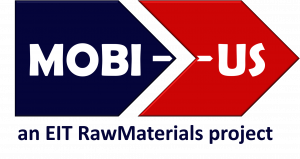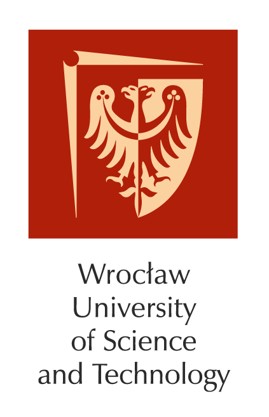
Pathway 8


MINING ENGINEERING
Pathway 8 offers mobility for students studying at the University of Zagreb faculty RGNF at Mining Engineering MSc to spend their second (summer) semester at the WUST in the Mining Engineering specialization of the Mining and Geology MSc. The driving force for the UNIZG-RGNF is to extend their programme with competencies towards geomechanics and geomechanical engineering, as well as in mine modelling and project management skills for the mining operations. These are strong elements in the curriculum of the WUST Mining engineering MSc.
CONTACT
Dr Gabriela Paszkowska:

1st - winter [ECTS]
Statistics [4.5]
Chemistry for miner [4.5]
Applied geophysics I. [6]
Mineral processing II. [6]
2 Optional courses [9]
Demolition of structures [3.5]
Measurement technology [3.5]
Numerical mathematics [3.5]
Geoinformatics [4.5]
Engineering geology [4.5]
Mine surveying [4.5]
Renewable energy [4.5]
Industrial mineral deposits [5.5]
[30]

2nd - summer [ECTS]
Foreign language [2]
[30]

3rd - winter [ECTS]
Underground chambers [6]
Mining law and regulations [3]
Technology of nonmetallic raw materials [6]
3 Optional courses [15]
Traffic routes [4]
Economic geology [4]
Ventillation of underground rooms and tunnels [5]
Economics evaluation of projects [5]
Testing and monitoring geotechnics [5]
Ground improvement [6]
Landfills [6]
Recycling and waste treatment [7]
[30]

4th - summer [ECTS]
Projecting in mining [7]
Management [2]
Master thesis [21]
[30]

Course descriptions of the mobility semester
- Expected prior knowledge: Lectures: Introduction to Mathematical Analysis, Statics and Strength of Materials.
- Study Goal: Presentation of foundations of Theory of Elasticity and its application in Rock and Soil Mechanics (The lecture will be delivered in index notation). Introduction of fundamental concepts of rock and soil mechanics and their application in surface and underground mining.
- Course contents:
Theory of Rock Mechanics
1. Frame of axes Cartesian coordinates. Einstein summation convention. Kroecker delta. Permutation symbol. Relationship e – δ.
2. State of strain. Material and space coordinate. Green, Almansy and Couchy strain tensors. Gradient matrix. Geometric interpretation of infinitesimal strain components.
3. Spherical and deviatoric tensors of state of strain. Principal strains and principal axes of strain tensor. Strain tensor invariants. Tensor of principal axes. Capability equations.
4. State of stress. Stress vector and stress tensor. Couchy formula. Coordinate transformations for stresses. Formal definition of a tensor. Hydrostatic and stress deviation tensor.
5. Normal and shear stresses. Principal stresses and principal axes of stress tensors and stress deviation tensors. Invariants of stress and stress deviation tensors. Octahedral stresses. Intensity of stress tensor. Mohr circle of stress components.
6. Linear elasticity. General Hooke law. Hooke law for Isotropic materials. Stress – strain deviatoric relationship. Hydrostatic stress versus dilatation formula. Relationship between different elastic module. .
7. Elastic strain energy expressed by stress and strain tensor components. Solving theory of elasticity boundary problems using displacement approach. Navier-Stoke’s equation.
8. Classical strength criteria. Effective stresses.
9. Coulomb- Mohr strength criterion. Safety factor.
10. Plane stress and plane strain problems of theory of elasticity. Solving theory of elasticity boundary problems using stress approach. Airy function. Biharmonic polynomials. Airy function In polar coordinate. General form of Airy function.
11. Introduction to Finite Element Method
12. Description of Phases code interface.
13. Simple example FEM calculation.
Theory of Soil Mechanics
1. Soil classification.
2. Modeling of soil and rock behaviour.
3. Effective stresses.
4. Water flow.
5. Bearing capacity of foundation.
6. Atteberg Limits and compaction characteristic of soil.
Practice of Rock Mechanics
1. Rock mass properties.
2. Rock mass classification.
3. In-situ stresses.
4. Methods for stress analysis.
5. Rock mass discontinuities and their strength.
6. Slope stability problems and rock fall hazard.
7. Rock bolts and cables in rock engineering.
8. Pillar strength and its importance in room-and-pillar mining.
9. Floor strata behavior in room-and-pillar mining.
10. Interaction of roof, pillar and floor .
11. Surface subsidence due to underground mining.
12. Structures resistance against earthquake and mining related motion.
13. Pillar strength and its importance in room-and-pillar mining.
14. Structures resistance against earthquake and mining related motion.
15. Application of Geomechanics in underground mining.
- Expected prior knowledge: Mathematical Statistics, Fundamentals of Geology and Mineral Deposits.
- Study Goals: Developing basic skills in computer modelling of 3-D objects. Introduction of the principles of digital modelling of typical geological structures. Introduction to the methods of deposit parameters estimation and resources evaluation.
- Course Contents:
1. Methods of creating, editing, managing and presenting of 3-D objects for the needs of modelling geological structures.
2. Building of digital 3-D models of geological structures on the basis of geological interpretation. Analysis of developed models.
3. Introduction to estimation methods of deposit parameters.
4. Principles of geostatistics. Kriging estimators.
5. Geostatistical modelling of the selected deposit parameters.
6. Resources evaluation.The modelling is supported by the specialized, three-dimensional software (Datamine or Geovariances) which provides the suitable software environment. The final project is presented both in the form of 3-D models and reports.
- Expected prior knowledge: Probability and statistical models. Standard office applications for Windows.
- Study Goals: The course combines two groups of topics: basics of mineral economics and financial management and introduction to project management.
Part A: The purpose of the course is to introduce the concept of time value of money and present the methods used to evaluate investment projects. Different techniques are illustrated by examples and case studies. The range of application as well as the advantages and disadvantages of each method are discussed. The issues of inflation and risk analysis are included.
Part B: Introduction to project management basic concepts, methods and tools. Presentation of given project management areas: Project scope management, Project time management, Project cost management, Project risk management. Project planning, scheduling and control using Microsoft Project. Presentation of the issues of effective communication in project teams, group behaviour and leadership. -
Course Contents:
Mineral Economics and Financial Management
1. Supply and demand, equilibrium price, changes in demand and supply.
2. Stock and commodity markets used by mineral industries.
3. Costs in economics and in accounting. Cost and money outflow. Relevant cost, incremental cost, marginal cost, alternative cost. Short-term decision making in mining.
4. Costs as the subject of cost accounting, different systems of cost accounting Different methods of cost data presentation (by types, divided into direct and indirect costs). Cost allocation
5. Variable and fixed costs. Break even point. Cost-volume –profit analysis.
6. Basics of financial accounting. Income statement and cash flow statement. Balance sheet. Working capital. Examples of financial statements of mining companies
7. Financial ratio analysis. Liquidity, profitability, activity and debt ratios. Calculation and analysis of financial ratios of mining companies. Financial and operating leverage
8. The concept of time value of money. Computation of future and present value of money by means of spreadsheet functions
9. Basics of capital budgeting. Evaluation of different methods. Computation by means of Excel-functions
10. Examples of mineral projects evaluation
11. The concept of risk and return. Quantification of risk.
12. Risk analysis in project evaluation: sensitivity analysis, scenario analysis, other methods.
Project management
1. Basic concepts (process, project, project management, management by projects, critical factors for project success, competences).
2. Preparing and initiation of the project. Project analysis (project environment, stakeholders, project objectives).
3. Planning and estimating of the project.
4. Project phases and life cycle.
5. Project organization.
6. Project scope management.
7. Planning of activities, resources and costs.
8. Project risk management.
9. Project monitoring.
10. Quality management. Change control.
11. Project communications. Project closing.
12. Project management methodologies.
Communication and Leadership in Project Management
1. Issues of understanding communication. Definitions. Models (Schramm model, Berlo’s SMCR (source, message, channel, receiver) model, McCroskey model, Reusch and Bateson model, Westley-MacLean model).
2. Conflict. Sources of conflicts. Kilmann and Thomas classification of conflict. Kilmann and Thomas test. Different styles of conflict solving. Roles of conflict in group development.
3. Team roles.Team roles Belbin perspective. Discussion group roles. Effective managerial behaviour in the context of team roles.
4. Leadership.Hersey and Blanchard theory. Black and Mouton approach to leadership. Fiedler theory and his Least Preferred Coworker Scale. Situational leadership self-assessment.
5. Summary.Effective managerial behaviour from the different contexts.
- Expected prior knowledge: Basics of GIS.
- Study Goals:
The course is an introduction to map algebra and spatial statistics for determination and modelling of mining related ground movements.
The purpose of the course is to introduce the students to the principles and applications of map algebra and spatial statistics to determine surface deformation models and mining terrain parameters, as well as to construct relationship models between surface deformations and causative factors. - Course Contents:
Lecture
1. Introduction to spatial databases and spatial data integration.
2. Introduction to spatial interpolation methods.
3. Map algebra concept, operations and functions.
4. Basics of spatial statistics (exploratory data analysis, spatial autocorrelation).
5. Spatial regression analysis.
6. Geovisualisation.
Seminar
Case studies in GIS applications in mining.
- Expected prior knowledge: Introduction to Rock Mechanics.
- Study Goals:
Fundamental understanding of integrated analysis of deformations using the combination of monitoring and numerical modelling of deformations, what is essential for studying the processes occurring in engineering structures and in rock mass at the construction and post-construction stages. To understand the fully automated monitoring principles, data collection, and processing.
- Course Contents: Integrated analysis of deformations; rock mass and earth mass material characteristics; determination of in-situ rock mass parameters; deterministic modeling of rock mass behavior; FEM; geodetic and geotechnical monitoring of deformations; deterministic modeling, Deformation Monitoring Surveys, design and implementation of geodetic deformation monitoring system. Short review of monitoring requirements and available monitoring techniques. Deformation measurements using the total station in the manual mode and in the fully automated way. Automation of monitoring surveys by using the ALERT-DDS deformation detection software.
Principle of integrated analysis of deformations; analysis based on system theory; analysis based on continuum mechanics; approximate methods for solving continuum problems; Finite Element Method (FEM); large scale problems in rock mechanics; deformation modelling of underground mining and tunnelling problems (empirical and deterministic); deformation modelling of open pit mining problems (empirical and deterministic); deformation modelling of earth dam and steep embankment problems. Geodetic and geotechnical monitoring of deformations. New monitoring geodetic techniques: Robotic Total Stations (RTS), Global Positioning System (GPS), Pseudolites, InSAR, Ground Based Radar Interferometry, laser scanners, continuous and fully automated monitoring system ALERT-DDS, challenges of geodetic monitoring systems. Geotechnical monitoring techniques, new geotechnical instrumentation (MEMS, fibre optics). FEM analysis using Geostudio software.
Case studies: oil fields (Venezuela), McKenzie natural gas project (Kanada), slope stability in open pit Chuquicamata copper mine in Chile, Highland Valley copper mine in Canada, Barrick Gold mine in Nevada. Hydro-electric projects: integrated analysis of large earth dams and concrete face rock fill dams (CFRD) in Canada, USA, and China.
Laboratory class: Review of monitoring requirements and available monitoring techniques. Design and implementation of geodetic deformation monitoring system. Deformation measurements using the total station in the manual mode and in the fully automated way. Automation of monitoring surveys by using the ALERT-DDS deformation detection software. Integration of multi-sensor observations (GPS, total station) for high accuracy measurements, stability check of control points, identification and separation of various causes of deformation.
Laboratory exercise:
A total station is used to measure the relative position of points with respect to the position of the robotic total station (RTS) with automated target recognition (ATR). Small targets are placed in the areas of interest throughout the object being monitored; the RTS is programmed to point to these targets and make precise measurements. The measurements are performed in the predefined pattern and schedule. The raw data are collected by RTS and then processed by the software to determine the final coordinates, displacements, displacements velocities of all the target points. Verification of the results. Optional: Multi-sensor observations (GPS, total station) for high accuracy and stability check.
Mining example: excavated areas in open pit mines require stability monitoring to guide production and safety (steeper walls mean more efficient use of resources, but may be more prone to failure) application accurate displacement monitoring system.
- Expected prior knowledge: Possesses fundamental knowledge of widely concerned mining, as one of the most important fields of technology and human activity, knows problems related to minerals search, sharing and mining.
Possesses knowledge of basic concepts of geology and systematized knowledge regarding resources and minerals mining in Poland.
Is able to use Microsoft Office to prepare Word documents and work with the spreadsheet Excel. - Study Goals: Introduction and explanation of problems related to technology of mechanized mining machines of different types and size used in open pit mining.
Becoming familiar with the relationships between parameters characterizing the geometry of the workplace and the proces of digging, controlling machine work process in order to achieve the proper efficiency level and forecasting the efficacy in different geological -mining conditions.
Preparing students to particular tasks completion in the area of work technology and the choice of technological system for the project of excavation and carrying out technological analysis of bucket-wheel excavator work. - Course Contents:
Lecture
The scope of the course. The aim of the course, conditions of crediting, literature, contact with the teacher. Basic concepts, definitions related to open pit exploitation of deposits, basic technological systems.
Basic technologies of open pit exploitation ( cintinuous, cycle, mixed), the ways off dredging and exploitation.
Bulldozers work technologies, the range of applications, divisions.
Efficiency work forecasting of bulldozers, the resistance movement, cooperation with the base.
Bucket-wheel excavator work technologies, the range of applications, divisions according to different criteria.
Efficiency work forecasting of a bucket-wheel excavator using chosen methods, the resistance movement, cooperation with the base.
Scraper work technologies, basic parameters, the range of applications, division, efficacy.
Ripper work technologies basic parameters, the range of applications, division, efficacy
Loader spoon work technologies the range of applications, division, efficacy.
Multi-bucket-wheel excavator work technologies, basic parameters, the range of applications, division, and work principles
Multi-bucket-wheel excavator work technologies, types of shortwalls.
Efficiency work forecasting of multi-bucket-wheel excavators, digging resistance, cooperation with the base.
Multi-bucket-chain excavators work Technologies.
Efficiency work forecasting of a multi-bucket-chain excavators, digging resistance, cooperation with a base.
Heaping in open pit mining, types of heaps, KTZ, Heping with the metod of direct tossing.
Project
Organization o classes. The scope of the Project, conditions of crediting, literature. Distribution of topics among students. Discussing the guidelines for the project titled: The excavation project, bulldozer and bucket-wheel excavator work technology.” Discussing the first stage of the project task, determining mining area and also the issue of the multilevel excavation embankment design on the slope.
Discussing the guidelines to the choice of a bulldozer as a machine which enables an access to the deposit.
Discussing issues related to an overlay indirect heaping in the excavation neighbourhood and the bulldozer work efficiency forecast.
Discussing the choice of a bucket-wheel excavator as a basic machine used for mineral dredging, designing the division of an excavation into floors. Discussing the problem of bucket-wheel excavator work forecasting using JLC method and its cooperation with car transport.
Students hand over projects- assessment and defence. Discussing the scope of project 2. Distribution of individual topics among students. Discussing the guidelines for the project: “Technological analysis of bucket-wheel excavator SRs…”
The core of shortwall system, discussing Basic parameters of a shortwall, defining the dredging radius and the angle of inclination of dredging jib in the function of dredging height and limit angles of the inclination of the side embankment of a shortwall in the function of its height. Determining maximum distance of an axis of an excavator route from internal side embankment in the function of shortwall height and presumed inclination of a side embankment, determining the minimum inclination of a side embankment in the function of a shortwall height and the distance of an axis of an excavator route from internal side embankment
Discussing the outer bottom width of a shortwall in the function of bottom outer angle of rotation of a dredging jib; the outer top width of a shortwall in the function of top outer angle of rotation of a dredging jib, the inclination of a side embankment and the height of a shortwall. Determing the outer top width of a shortwall in the function of the outer bottom angle of rotatation of a dredging jib, the inclination of a side embankment of a shortwall when the inner top angle of rotation of a dredging jib equals 900.
Determining the width of a shortwall in the function of the outer bottom angle of rotation of a dredging jib, with the limiting slope of a side embankment depending on the height of a dredging floor together with the limiting slope of a forehead embankment of a shortwall in the function of its height.
Determining two maximum values of a take: considering the slope of the forehead embankment because of the ability to drive to the forehead of shortwall and because of the possibility of the contact of a dredging jib structure with the upper edge of the second level in a shortwall. Determining the angle of inclination of the jib structure axis in the function of the height of a bucket wheel axis and also the angle describing the dimension of a lower piece of a dredging jib structure.
Forecasting the SRs efficacy considering particulr groups of factors, dermining the individual digging resistance and digging force in given geological-mining conditions. The final calculations concerning side and forehead shortwalls, discussing the graphic form of a project.
Student hand over Project – assessment and deffence.

